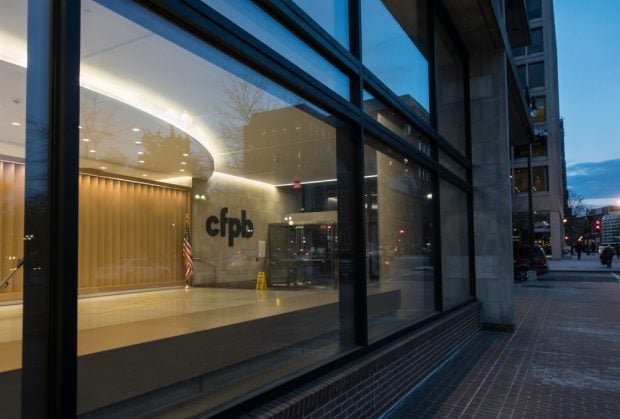Just about a year ago, I wrote in these pages that credit unions must have felt like they were riding a roller coaster with their auto lending programs. After all, their market share had gone up and down as the overall auto lending industry had several chaotic years.
However, a close look at the numbers this year gives me a slightly different perspective. Yes, market share continues on a somewhat wild ride, and this year credit unions took advantage. Their overall market share was up to 17.34% in the fourth quarter of 2011, a 4.9% increase over the fourth quarter of 2010, while their share of the used loan market reached 21.1%, a 5.7 % year-over-year increase. However, what really struck me was the consistency that credit unions have maintained, despite the industry's overall volatility.
Overall, credit unions have maintained a strategy of making loans to customers with much higher credit scores. During the fourth quarter of 2011, credit union customers had an average 766 credit score for new vehicle loans and an average 718 credit score on used vehicle loans. This compared to industry averages of 761 for new vehicle loans and 670 for used vehicle loans.
Recommended For You
In addition, 66.68% of all credit union loans went to members with prime or super prime credit. Focusing on members with higher credit has allowed credit unions to maintain stable loan portfolios, with the lowest delinquencies and at-risk dollars in the industry, and giving them the flexibility to maintain lower interest rates, higher loan-to-value ratios and longer loan terms.
Low delinquencies, dollars at risk in auto lending
Those disciplined and conservative lending practices seem to pay off for credit unions. When looking at 30- and 60-day delinquencies and total dollar volume of loans at risk, credit unions significantly outperform the market as a whole.
For 30-day delinquencies, only 1.58% of all loans are delinquent. This is 120 basis points below the industry average of 2.79% for 30-day delinquencies. When compared to year-over-year figures from the fourth quarter of 2009 and the same quarter in 2010, credit unions' 30-day delinquencies are trending downward. They were 1.82% and 1.72% for both of those quarters, respectively.
For 60-day delinquencies, credit unions have a small fraction of delinquent loans at 0.38%. This is nearly half the industry average of 0.72% (33 basis points lower). Year-over-year comparisons show credit unions are headed in the right direction with 60-day loans as well. In the fourth quarter of 2009, 60-day delinquencies stood at 0.52%, and in the same quarter in 2010, they were 0.44%.
Credit unions also have the smallest amount of total dollars at risk, when compared to other types of lending institutions. With $1.93 billion at 30 days delinquent and just $422 million at 60 days delinquent, credit unions account for only 12.7% of all dollars at risk, despite having more than 17% market share.
Repossessions, chargeoffs well below industry averages
Two more key statistics underscore the solidity of credit union loan portfolios: repossessions and charge-offs.
The quarterly repossession rate for credit union loans was just 0.18% during the fourth quarter of 2011, which was down from 0.19% in the fourth quarter of 2010. This was more than three times less than the industry average of 0.63%, and more than 12 times less than the repossession rate for finance companies (2.47%).
Credit unions also fared well with chargeoffs. During the fourth quarter of 2009, the average chargeoff for a repossessed vehicle was $8,966 for credit unions. Just two years later, credit union chargeoffs fell to $6,442, compared to an industry average of $6,815. Only banks fared better, with an average chargeoff of $6,141 during the fourth quarter 2011.
Stability equals longer terms, higher LTV ratio
Because credit unions cater to customers with better credit scores and have well-performing loan portfolios, they can take calculated risks in other ways. This includes lower interest rate terms and higher LTV ratios.
During the fourth quarter of 2011, the average interest rate for credit unions was better than the average used vehicle loans to all credit tiers. For new vehicle loans, credit unions provided better than average loan rates for nonprime, subprime and deep-subprime customers, and were within a few basis points of the average interest rate for new vehicle loans to prime and subprime customers.
For LTV ratio, credit unions were at 112.39% for new vehicle loans, which was second highest in the industry, trailing only finance companies at 123.35%. Similarly, for used vehicle loans, credit unions have an LTV of 131.92%, also second highest in the industry behind finance companies at 150.48%.
Eye on the Bottom Line
Despite the overall volatility of the automotive credit market in the past several years, credit unions have performed well. With a current market share of 17.34%, credit unions are entrenched right on the heels of captive finance arms, which have 17.91% of the market share. Additionally, credit unions closed the market share gap on captives from the fourth quarter of 2010 to the fourth quarter of 2011, with credit unions' share going up by 4.9% while captives fell by more than 10%.
Credit unions seem to have stuck to their roots, maintaining disciplined lending strategies that are core to their mission and their niche in the market. If they stay the course, the credit union sector will continue to thrive if the market continues to recover as expected.
© 2025 ALM Global, LLC, All Rights Reserved. Request academic re-use from www.copyright.com. All other uses, submit a request to [email protected]. For more information visit Asset & Logo Licensing.






